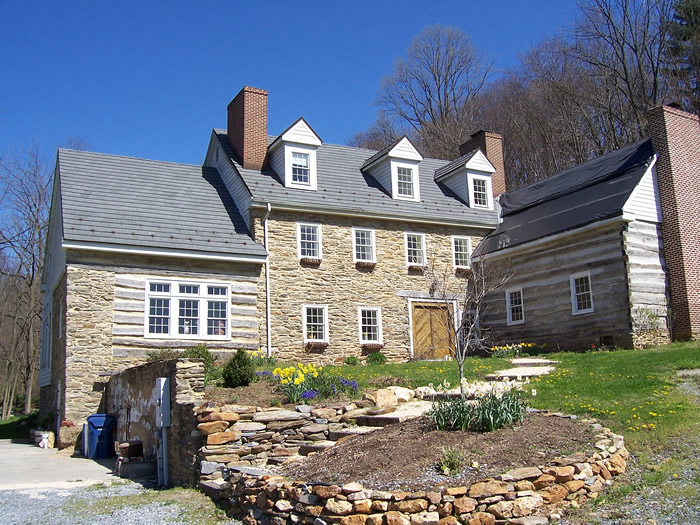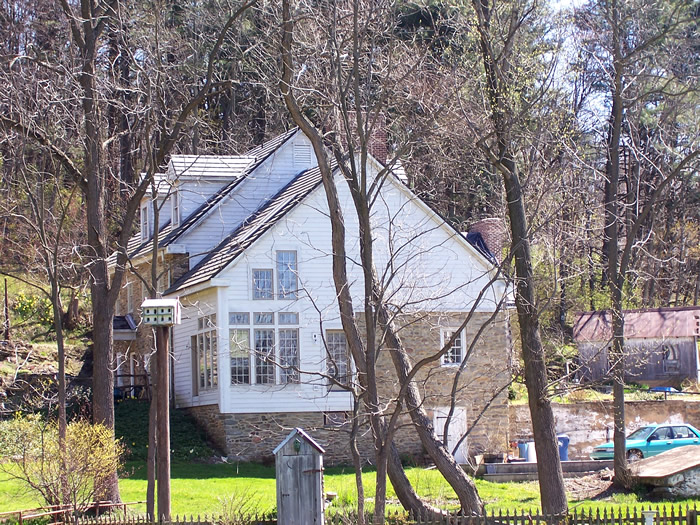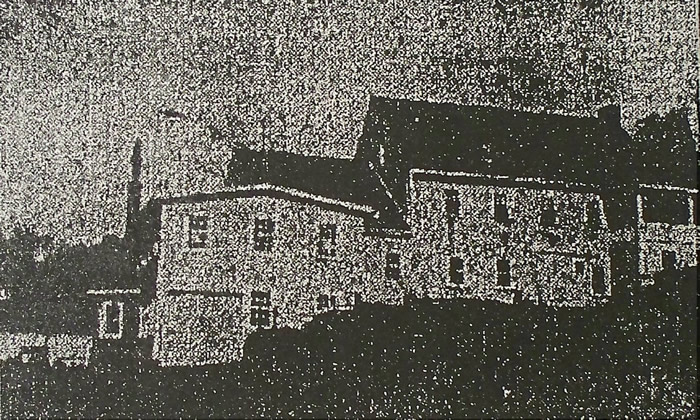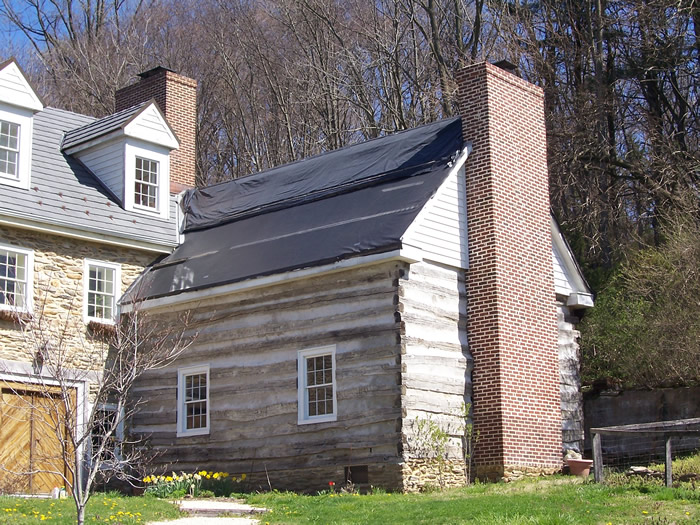
White Oak Mill-site or partial mill
Lancaster Co. | Pennsylvania | USA
Watersource: Big Beaver Creek
White Oak Mill-site or partial mill
The location is from Camargo mill, go west on Camargo Rd a short distance and turn right on Picadilly Hill Rd. The first road to the right will be Stony Hill Rd. Turn right and go to next road on left, Springville Rd. The mill property sits on the northeast corner of the junction on Big Beaver Cr.

This is the right location by the map and by talking to the owners. Barton also talks about the mill pond behind the building which is still there. The present owners did not know if the present building was part of the mill or not. They were not interested in the mill. They just wanted the house. They said when they looked at the house the first time there was a lot of mill equipment and other junk lying around the outside. The log sections were added after the current owners bought the property.

The original mill was built by Abram Hoover in 1798-99 as a woolen mill. Hoover ran the mill until the panic surrounding the War of 1812 caused the loss by Sheriff's sale to George Hersh of Strasburg. Hersh changed the machinery to weave linen, added a lindseed oil mill and a whiskey still. "Lindsey Woolsey" cloth was produced, half linen, half wool, used as tablecloths, sheeting, pants, and grain sacks. Hersh died in 1844, and the mill was sold to John Bassler, who was running the Barr Mill near Camargo besides a sillhouse. Bassler converted the oil mill to a chopping mill, producing animal feeds.

Mr Bassler sold the business in 1856 to Joseph Hooker Wimer (Weimer) a wagonmaker who learned his business from Henry Keen of Haukesville (Hawksville). Wimer tore out the millstones and still and turned part of the structure into a sawmill to facilitate his wagon business. He remodeled the other end of the former woolen/oil/chopping mill into a dwelling where he lived. Rakes and handles were also manufactured here. That would make the current dwelling there part of the original woolen/oil/chopping mill comlex.

In 1923, it was determined that there were more Wimer wagons in use in the county than any other make. "Jo" Wimer was a fiddler of considerable note; and, he and his wife and thirteen children would host old fachioned dances at various seasons throughout the year, open to all comers who enjoyed dancing and the festivities of the "Stony Hil" community.